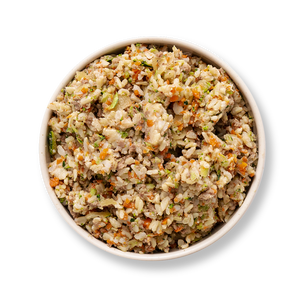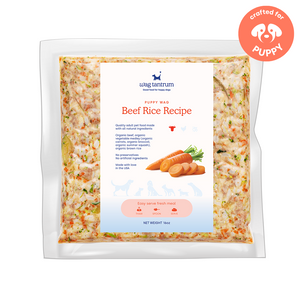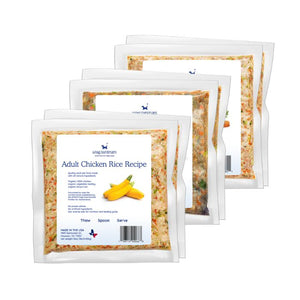Your Dog's Endless Appetite
Your Dog's Endless Appetite: What It Actually Means
My dog is always hungry" is a common phrase echoing through countless households, as pet owners watch their furry friends beg for food with those irresistible puppy eyes. Whether your dog devours their meals in seconds or constantly searches for snacks, this behavior might leave you wondering if something's wrong.
In fact, a dog's seemingly endless appetite can stem from various factors, ranging from simple behavioral patterns to underlying health conditions. Understanding the difference between normal food enthusiasm and problematic eating habits is crucial for maintaining your pet's wellbeing.
This guide explores the signs of abnormal appetite in dogs, examines dietary influences, and provides practical solutions for managing your pet's eating habits. You'll learn how to distinguish between genuine hunger and learned behaviors, ensuring your dog maintains a healthy relationship with food.
Signs Your Dog's Appetite Isn't Normal
Recognizing the difference between a healthy appetite and problematic eating patterns can help you spot potential health issues early. Let's explore the key signs that indicate your dog's appetite might need attention.
Differentiating between normal and excessive eating
A healthy dog maintains a consistent eating pattern and stops when full. However, some dogs show concerning signs like bolting their food or eating large quantities in short periods, known as "scoffing". Additionally, while many dogs eagerly anticipate meals, constantly begging for food throughout the day isn't typical behavior.
Physical symptoms to watch for
Your dog's body offers clear indicators of appetite issues. Specifically, watch for these warning signs:
-
Digestive Changes: A common sign is when bowel movements are normal in the morning but become soft later in the day [2]
-
Weight Fluctuations: Being unable to see your dog's waist from above or having to press hard to feel their ribs indicates excess weight [3]
-
Physical Discomfort: Abdominal swelling and unusual gas patterns, particularly with strong odors, can signal overfeeding [2]
Behavioral red flags
Furthermore, behavioral changes often accompany abnormal eating patterns. Watch for signs like excessive drooling or showing disinterest in regular activities [2]. Consequently, some dogs might become protective of their food, displaying resource guarding behaviors or unusual aggression during mealtimes.
Most importantly, any sudden changes in eating patterns that last more than 48 hours warrant veterinary attention [4]. This is particularly crucial if your dog shows additional symptoms like lethargy or increased water consumption [5].
The Role of Diet in Appetite Control
The quality of your dog's food plays a crucial role in managing their appetite. Indeed, studies show that dogs consume fewer calories and appear less hungry when fed fiber-enhanced foods [5]. This insight offers a practical solution for pet owners dealing with constantly hungry dogs.
Impact of food quality on satiety
High-quality dog foods designed for weight management contain specific ingredients that help your pet feel satisfied longer. Research indicates that dogs lost 80% more fat when fed a high-protein, high-fiber food compared to foods with similar protein but half the fiber content [5]. Moreover, these specially formulated foods help prevent the frustrating cycle of begging and overfeeding that many pet owners experience [4].
Importance of proper portion sizing
Proper portion control requires careful consideration of your dog's individual needs. Adult dogs typically need a minimum of 18% protein in their diet, although this varies based on activity level and life stage. Similarly, growing dogs and those with high energy needs should consume at least 20% carbohydrates.
Nutritional requirements for different life stages
As dogs age, their nutritional needs change significantly. Here are the key requirements across life stages:
-
Puppies and Growing Dogs: Need more calories, protein, and fat until 12 months of age
-
Adult Dogs: Require moderate amounts of nutrients for maintenance
-
Senior Dogs: Need 20% fewer total calories than middle-aged adults
Altogether, the right combination of nutrients helps control your dog's appetite naturally. For instance, therapeutic diets that make pets feel satisfied while providing fewer calories have shown remarkable success in weight management programs [4]. When selecting food for your always-hungry dog, focus on options that combine high fiber and protein content, as these elements have proven most effective in limiting voluntary food intake [4].
Environmental Factors Affecting Eating Habits
Your home environment plays a vital role in shaping your dog's eating habits. Therefore, understanding these environmental factors can help manage that "always hungry" behavior more effectively.
Household routines and feeding schedules
Dogs thrive on consistency. Initially, establishing a regular feeding schedule helps create security and predictability in their daily routine [2]. According to research, when meals become cornerstone events of the day, dogs develop better eating habits and show less anxiety around food [2].
Multi-pet dynamics
Managing mealtimes in multi-pet households requires careful planning. First thing to remember is that feeding dogs together can actually reduce food-related aggression between them [3]. As a result, creating designated feeding spaces for each pet helps prevent competition and ensures everyone gets their fair share [7].
Food accessibility and storage
Proper food storage not only maintains nutritional value but also prevents overfeeding. Here are essential storage guidelines:
-
Store dry pet food in temperatures below 80°F [5]
-
Keep food in original packaging or transfer the entire bag to an airtight container [5]
-
Clean storage containers between new bags to remove residual fat and crumbs [5]
-
Place pet food in secure locations inaccessible to persistent pets [5]
Most noteworthy, environmental changes like moving to a new house or alterations in daily schedules can trigger changes in your dog's appetite [4]. Maintaining consistent feeding practices throughout such transitions helps minimize disruptions to your pet's eating patterns.
Creating a Balanced Feeding Strategy
Creating an effective feeding strategy helps manage your dog's constant hunger while ensuring proper nutrition. Let's explore practical solutions that work.
Meal timing and frequency
Setting up the right feeding schedule makes a substantial difference in managing hunger. Dogs should eat at least two meals each day, spaced approximately 12 hours apart [2]. Subsequently, if more than 12 hours passes between meals, your dog's stomach can become hyperacidic, leading to nausea [2].
Appropriate treat allocation
Notably, treats play a crucial role in your dog's daily caloric intake. Following the 10% rule is essential - treats should never exceed 10% of your dog's total daily calories [8]. Here's what to remember about treats:
-
Consider the hidden calories in common treats like cheese cubes
-
Subtract kibble from meals when giving high-calorie treats
-
Use measured portions for daily treats [8]
Exercise and activity level considerations
Generally, your dog's exercise routine directly impacts their feeding needs. Dogs engaging in over 2-3 hours of daily physical activity require different nutritional support [6]. Athletic dogs need around 25-30% protein and about 20% fat in their diet.
For active dogs, primarily focus on matching energy needs with activity levels. A dog who enjoys regular hiking or extensive fetch sessions might require more calories. On the contrary, if your pet prefers lounging on the couch, you'll need to be more careful with portion sizes to maintain a healthy weight [1].
Remember that strenuous exercise immediately after meals can cause problems [9]. Allow appropriate rest time between feeding and activity sessions to prevent digestive issues and ensure proper nutrient absorption.
Conclusion
Understanding your dog's appetite patterns helps maintain their health and happiness. Though constant begging might seem concerning, proper diet management and consistent feeding schedules effectively address most appetite-related issues.
A balanced approach combines high-quality food choices with appropriate portion sizes, while considering your pet's age and activity level. Regular feeding times, careful treat allocation, and proper food storage create structure that helps regulate your dog's eating habits.
Most dogs display food enthusiasm naturally, yet persistent hunger signs warrant attention. Watch for physical symptoms like weight changes or digestive issues, along with behavioral shifts that might signal underlying problems. Should these signs appear, scheduling a veterinary check-up ensures early detection of potential health concerns.
Remember that each dog has unique nutritional needs based on their life stage, size, and activity level. Adjusting their diet accordingly, paired with consistent feeding practices, leads to better appetite control and overall wellbeing. Through careful observation and proper feeding strategies, you can help your furry friend develop a healthy relationship with food.








